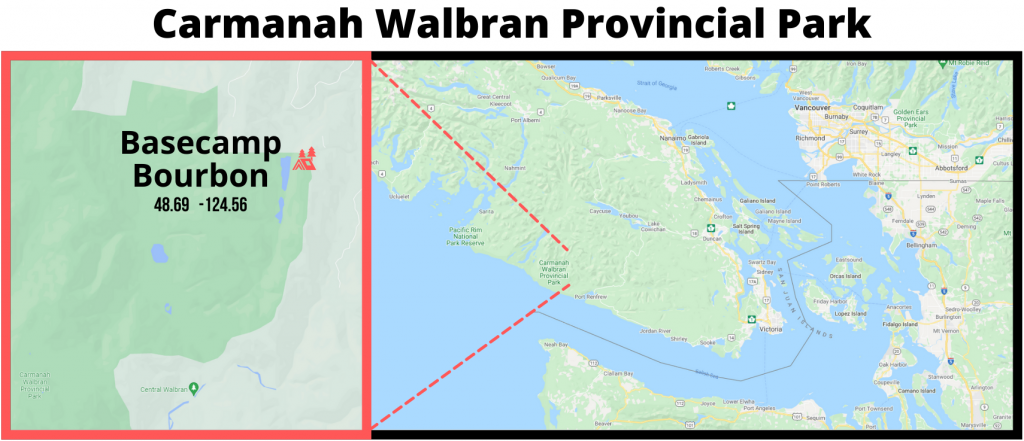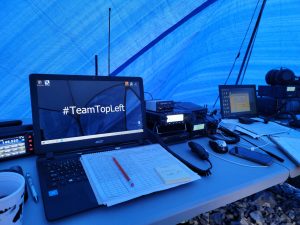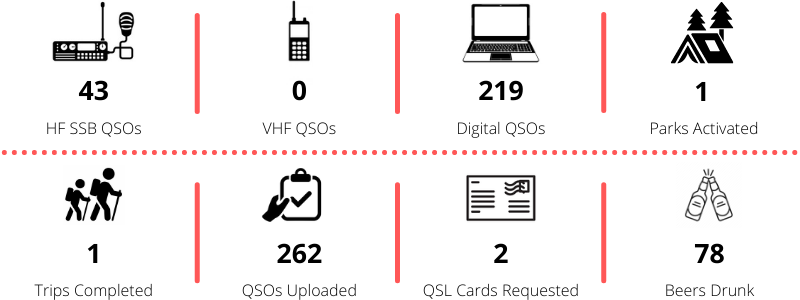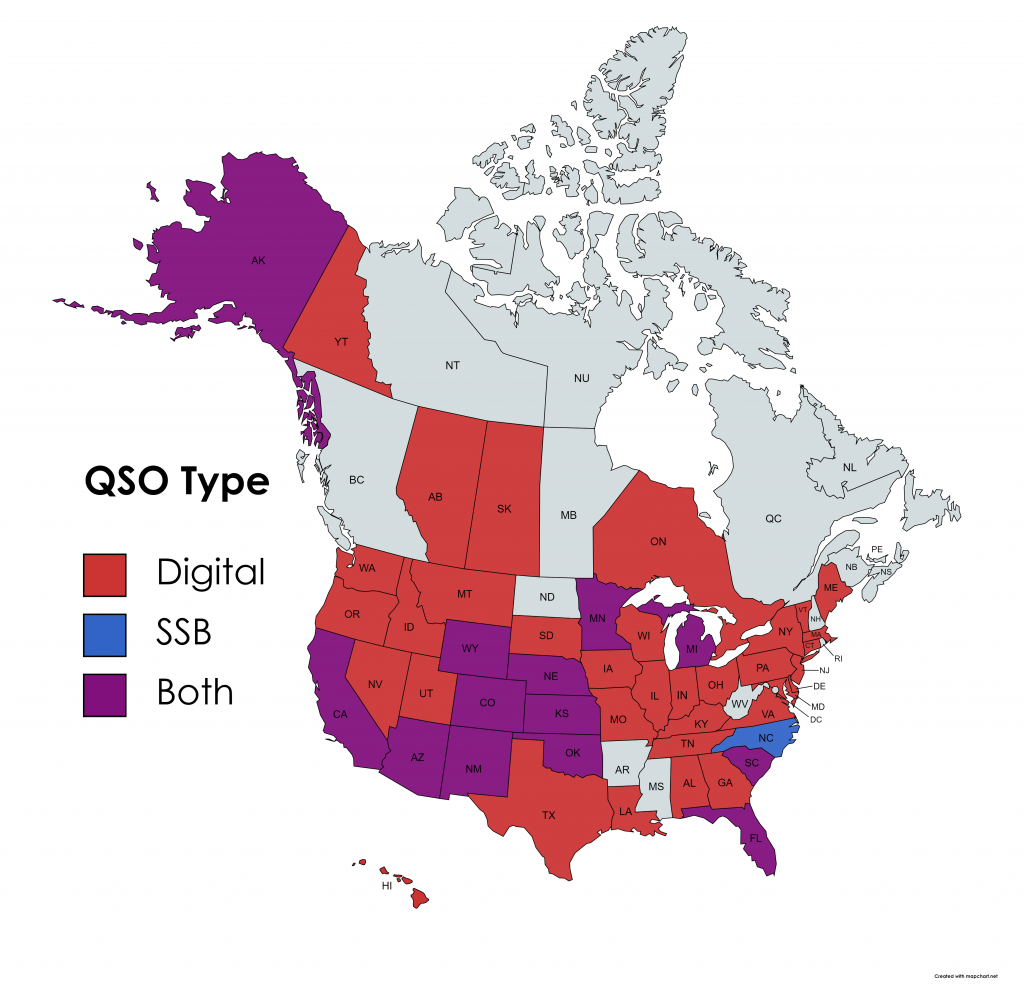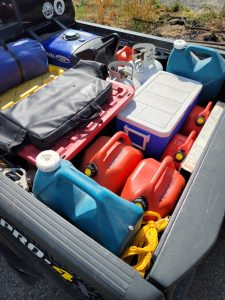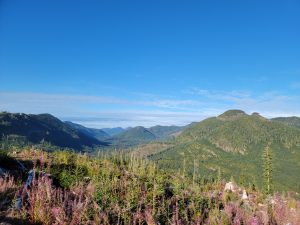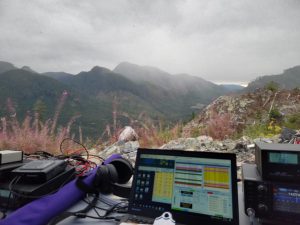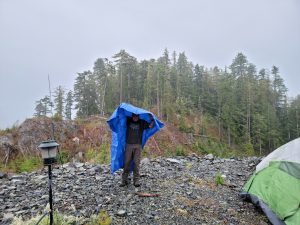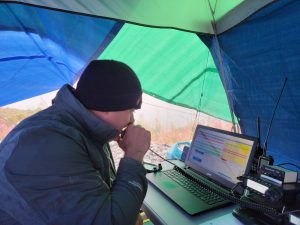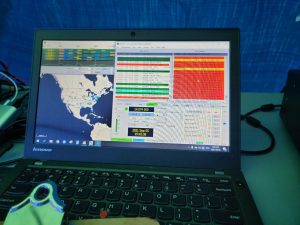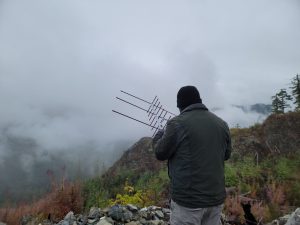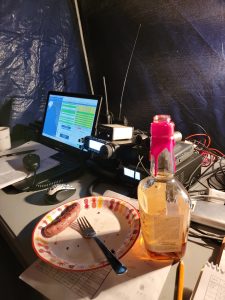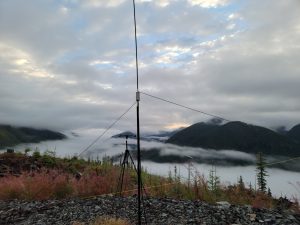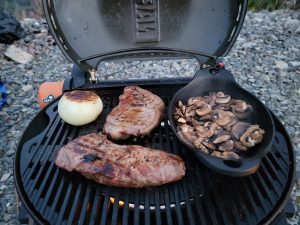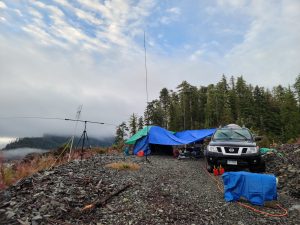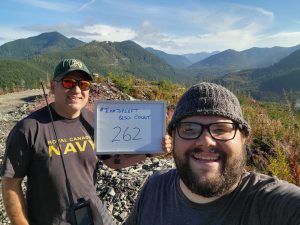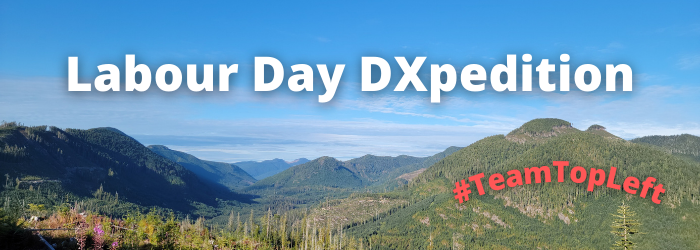
Location: Carmanah Walbran Provincial Park (POTA VE-3205)
The Province of British Columbia calls Carmanah Walbran “without a doubt one of the most remarkable wild places on Vancouver Island.” The park encompases 16,365 hectares of diverse forest ecosystems, including a large Sitka spruce ecosystem that represents 2% of BC’s remaining old-growth forest. Carmanah Walbran is home to some of the world’s largest spruce trees, some reaching heights in excess of 95 metres and living for 800 years or more. The park is also home to ancient, gnarled cedars – estimated to be well over 1,000-years-old.
Nestled beneath these awe-inspiring trees is a diverse variety of flora and fauna possible only in an ecosystem that has remained undisturbed for hundreds of years. However, for all it’s beauty, it is also a difficult destination to reach. Every winter, the Carmanah Valley experiences major flooding and changes to the river channel, damaging and in some cases washing away the trail. Significant storm damage turns the ancient trees into deadly hazards and trails are not maintained deep into the park. Road access is very rough and cannot be guaranteed; storms and logging trucks hauling timber can make road passage impossible. The province warns visitors to proceed with caution “at all times.”
These hazards help explain why the park has never been activated!

DXpedition:
We spent the weekend operating from the inside of a cold rainstorm. The bands were in decent form that weekend, but it was raining so hard that the noise of the rain on the tarps and rocks made it impossible to hear anything, even with headphones. We spent most of Saturday resorting to FT8 and FT4 just to get on the air.
But once we went digital we started stacking up QSOs. Matthew worked his way across the Pacific on 20M FT8 with QSOs to Alaska, Asiatic Russia, Australia, Fiji, Hawaii, Indonesia, Japan, New Zealand, Ogasawara Island, and Samoa. Shoey wrangled tarps in the cold rain, but also managed to work most of the US East Coast on 40M and 80M.
On Sunday, the rain broke a bit and our mesh tent kept the ravenous mosquitos out as we eagerly got on SSB. People were excited to hear that we were activating a brand new park and we alternated between calling CQ and answering other calls. We managed 8 POTA Park-to-Park contacts and logged special event stations K2A celebrating free and open amateur radio software, K7RDG from the ghost town of Paradise, Arizona, and T1200I celebrating the 200th Anniversary of the Independence of Costa Rica.
As for VHF and 6m, we called CQ for hours on different days with no response, occasionally changing our antenna direction. It was pretty disappointing. Our APRS was getting out, and we were receiving APRS reports from others. However, the voice band and digital just didn’t seem active at any time during our trip.
When the weather allowed, we attempted satellite passes for AO-91, AO-92, and SO-50 with no success. The truth is that satellite work is very new to both of us. We definitely have the right gear, so the fault must be ours. We could hear the passes clearly, but couldn’t get into them, despite having what we believe are the right frequencies and tones programmed. This is an area of ham radio we are both keen to explore and we hope to get better at satellite work so that we can be a better resource for our fellow hams. (If you are a satellite expert willing to share your advice, please send it our way!)
In total, we were on air for 28 hours over two days and logged 262 QSOs. We achieved Carmanah Walbran’s first POTA activation as well as a World Wide Flora & Fauna activation. We contacted 44 states, 4 provinces, and 15 DXCC entities, including several new ones for our own DXCC totals!

